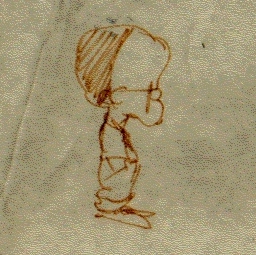- Blog/
Counterfeiting and Car Chases, LA Style
I love movies about LA, ranging from Hollywood stories (The Player), comedies (LA Story), to the gritty noir pics based on Walter Mosely and James Ellroy novels (LA Confidential, Devil in a Blue Dress).
But the first and most hard-edged LA “locale” movie I remember seeing back in the eighties (dated by the Wang Chung soundtrack) is William Friedkin’s To Live and Die in LA, featuring a baby-faced William Petersen and John Pankow as secret service agents pursuing a master counterfeiter played by Willem Dafoe, who by the way was creepy back then, too.
As in Friedkin’s notable works The French Connection and The Exorcist, the main characters in this film obviously have their demons (well OK, literally in the Exorcist) that push them onto self-destructive paths and into conflict with each other. But even with the fine and nuanced performances supplied by the actors, they seem remote and inaccessible. The more sympathetic characters are the supporting ones, such as the devious yet lively fake money courier played by John Turturro.
But LA’ers are known to be cold and superficial (as I’ve heard newly-arrived Midwesterns and Southerners say), so it does feel right, along with the many outdoor shots of not-so-pretty LA where the kidnappings, robberies, pursuits, fights and other mayhem ensues. Although strong themes run thoughout this film — the thin line between enforcing the law and breaking it, ambition and frustration, the circle of people using each other — the highlight of the film is the action. The fights are authentically brutal and messy, the pursuits on foot look exhausting (even more so in the “making of” featurette on the DVD), and the car chase is one of the best ever on film (ranking right up there with the famous one in The French Connection).
In the director’s commentary, Friedkin deliberately avoids discussion of much detail or interpretation of the film (which is a bit maddening since the end seems to bring up and leave open a lot of questions), but instead focuses on his philosophy of filmmaking and how he put the film together. The account is far from dry, however, and includes quite a few interesting anecdotes. That thread is continued almost seamlessly into the making-of featurette, which thankfully imparts the history of the film in more of an Actor’s Studio style than a promotional clip.
In a nice turnabout from the usual, the alternate ending included on the DVD is the dumbed down version pushed by the studio — that ending is so idiotic, it is a relief to know that for once the director’s cut is the one that made it into the theaters. Also atypical, the deleted scene featured on the DVD is one that was cut entirely at the director’s discretion, and Friedkin admits in all candor in the associated commentary that his deletion was a mistake and he wishes he could reintegrate it back into the film.
Altogether, it’s a nice, fast trip back to the 80’s, even if Wang Chung is not your cup of tea. The film may feel short, but the DVD bonus features compensate and are well worth viewing.

